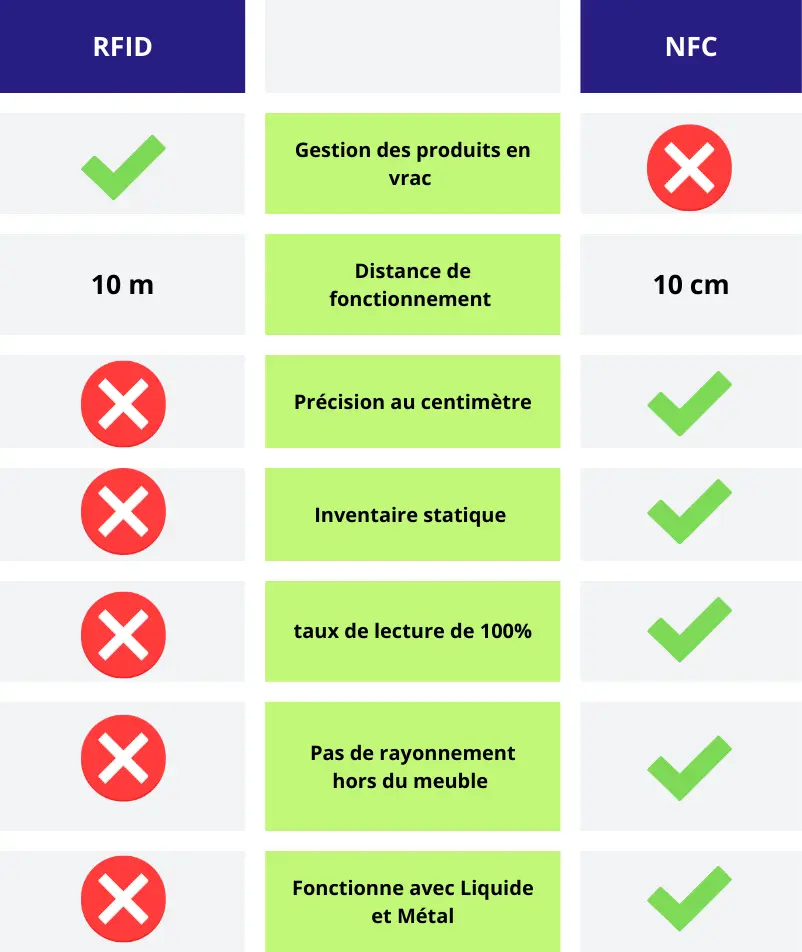The difference between RFID and NFC
NFC (Near Field Communication) is part of the large family of RFID (Radio Frequency Identification) technologies. These are two non-contact radio frequency identification systems, but with different uses, ranges and levels of safety. So, what is the difference between RFID and NFC?
Scope: a key criterion
- RFID: works at medium or long distance (up to several meters), often used for mass readings.
- NFC: on the contrary, it works at short range (a few centimeters), which allows an accurate and controlled reading, ideal for sensitive environments or single uses.
Security and control
NFC provides more secure authentication:
- Each interaction is triggered voluntarily (e.g. via a smartphone or proximity reader).
- Data can be encrypted (encrypted) to secure exchanges.
- Ideal for traceability, access control or fight against grey market.
Native mobile compatibility
Unlike most RFID technologies, NFC is integrated directly into the majority of modern smartphones, allowing for immediate interaction without additional equipment. This is what allows users to "type" an NFC tag with their phone to view product information.
Why did Centiloc choose NFC?
At Centiloc, we chose NFC for its accuracy, security and ease of use, especially in complex environments such as retail, laboratories or sensitive supply chains.
It allows us to offer a reliable, discreet and accessible solution, whether for automated inventory, product traceability or real-time detection.
In short


